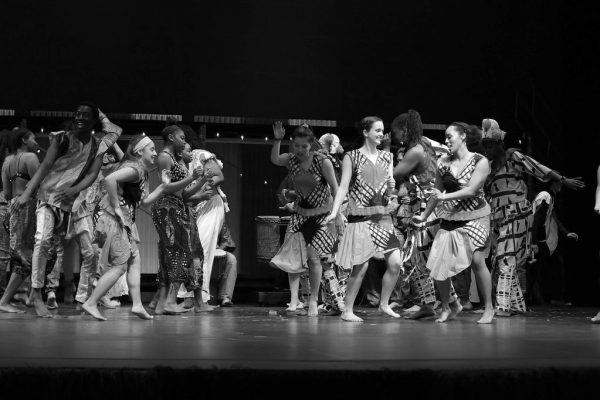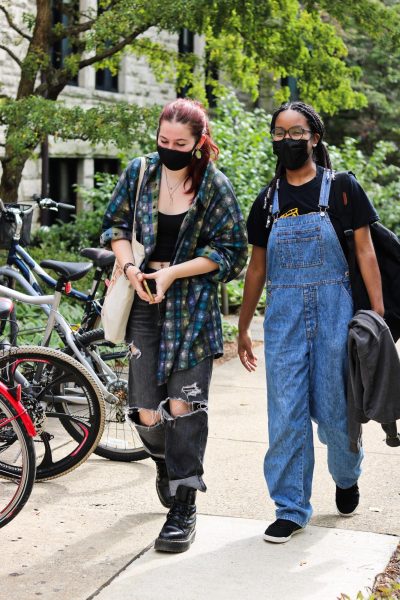Continued Gun Violence Affects Generations of Americans
On March 30, thousands of Tennessee students walked out of school and marched to the State Capitol building in response to a mass shooting at the Covenant School, which tragically claimed the lives of six people: three elementary school children and three adults. This walkout was the latest in a string of many over the past few years that have occurred in response to school shootings.
There have been over 100 mass shootings in the United States in 2023. It’s a staggering number, almost impossible to conceptualize and even harder when the loss of human life is considered. Yet this statistic has not graced the front pages of any newspapers, and this figure alone does not have the same impact on Americans that it may have had even ten years ago. Americans, and more specifically American legislators, have become accustomed to statistics of this kind.
The coverage of this walkout brought us back to our own involvement in school walkouts in response to mass shootings, having both participated in the national walkouts organized by March for Our Lives in March 2018. Five years have passed since this event. We think of our siblings, now close to the ages that we were when March for Our Lives was founded in response to a school shooting at Marjory Stoneman Douglas High School in Parkland, FL. How will they respond to these tragedies? Does the violence shock them as it shocked us at their age or has this type of gun violence become so commonplace that the anger has been lost, leaving only hopelessness? We are devastated by this thought. How can so little have changed since we marched? How can we still be in virtually the same place that we were before? Why do we let children continue to die from the same preventable cause?
This is not to discount the meaningful legislation that has resulted from these protests and the power of the collective action of student organizers that has propelled us forward. It is thanks to these efforts that we owe several pieces of effective legislation: In 2022, common sense gun legislation received a major victory with the Bipartisan Safer Communities Act, which, among other things, enhanced background checks, supported state red flag laws, and invested in mental health services and access. But for every step forward, it seems as if the movement is set two steps back. Recently, the Florida state legislature approved legislation that would allow permitless open carry.
In writing this we would like to point to the undeniable fact that generation after generation of Americans continue to feel the impact of the gun violence epidemic plaguing this country. Every student in the United States has been touched by the impact of gun violence and, unless change happens, will continue to be. Most domestic students at Oberlin likely remember armed intruder drills happening at some point in their pre-college education.
We remember these drills being first implemented around 2012, following a mass shooting at Sandy Hook Elementary School in Connecticut. We continued to experience these drills throughout the remainder of our education, with yearly drills being implemented in our school districts following the Parkland shooting. Between and following these two shootings, there have been hundreds, if not thousands, more. We just don’t remember all of the names and places; there are simply too many. A quick Google search for “gun violence” or “mass shooting” will yield a myriad of results published in the past 24 hours, each seemingly about a different shooting within the past couple weeks. In just a short time, the news circuit will move on, publicizing and reporting on the next shooting and the next.
This leaves little time to process the news, to truly understand it. More importantly, it gives those affected little time to grieve and truly make sense of their losses. How does a parent process the loss of their child at school, a place where children are supposed to be safe? How do these children process the loss of their classmates? How does anyone process the loss of their friends or family members to senseless violence? How do communities move past these tragedies and recover, despite the holes of missing people in the patchwork that makes the communities what they are? There simply aren’t words to describe the pain and trauma that a mass shooting brings to a community. Following a mass shooting at the Tree of Life synagogue in Pittsburgh in October 2018 — four and a half years ago — remnants of the tragedy are still visible in the signs saying “no place for hate” around the neighborhood and the chain link fence that surrounds the synagogue, covered with banners displaying art made by children from the Pittsburgh and Orlando areas: two cities touched by the horrific reality of mass shootings in America.
The threat is ever present. Gun violence — in the form of mass shootings in particular — has become frighteningly normalized in the United States. This is not a fresh take; it is a disturbingly old one. That in and of itself should be horrifying. How do we keep repeating the same conversation? At what point does this epidemic end? When do we say, once and for all, that enough is enough? How many more kids need to die for something to happen? How many more people will die as a result of our politicians’ inaction?
The prevalence of mass shootings in America has made it difficult to be shocked when these horrific events happen. A mass shooting is four deaths. Why should that be considered a small number? It horrifies us to think of our sisters growing up in this same reality, that soon they, their friends, and their peers will be exposed to the same traumas and stresses, if they have not already been. This cannot go another ten years. This cannot go another five. We, the people, are tired. What else can we do to make our voices heard?




